Abstract
Rats were shocked at the rate of two per minute until they pressed a lever. In Experiment I, shocks were delivered at variable-time intervals averaging 30 sec; in Experiment II, shocks were delivered at fixed-time intervals of 30 sec. A response produced an alternate condition for a fixed-time period. The shock frequency following a response, calculated over the whole alternate condition, was two per minute. The pattern of shocks in the alternate condition was controlled so that the first shock occurred at the same time as it would have occurred had the response not been emitted; the remaining shocks were delayed until near the end of the alternate condition. Bar pressing was acquired in both experiments. This finding is not explained by two-factor theories of avoidance and is inconsistent with the notion that overall shock-frequency reduction is necessary for negative reinforcement. The data imply that responding is determined by the integrated delays to each shock following a response versus the integrated delays to shock in the absence of a response.
Keywords: aversive control, avoidance, delayed shock, shock frequency, bar press, rats
Full text
PDF
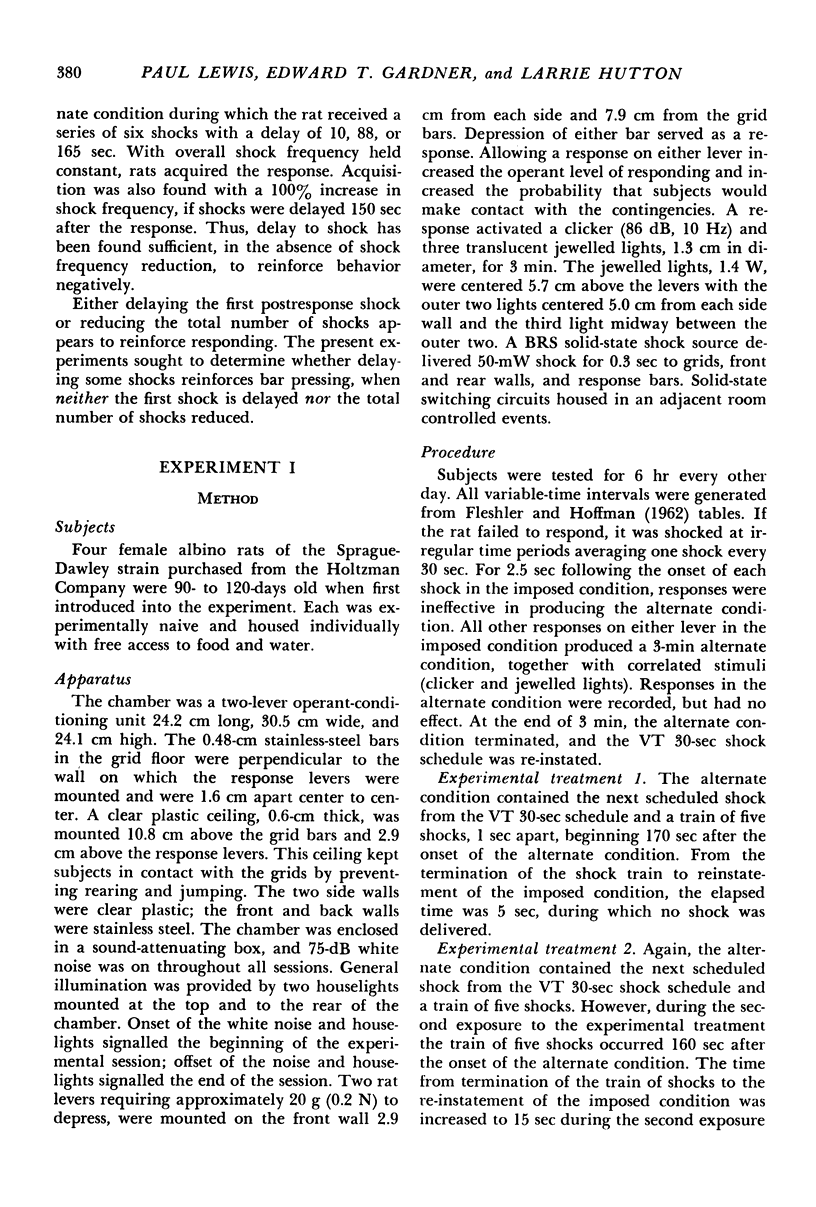
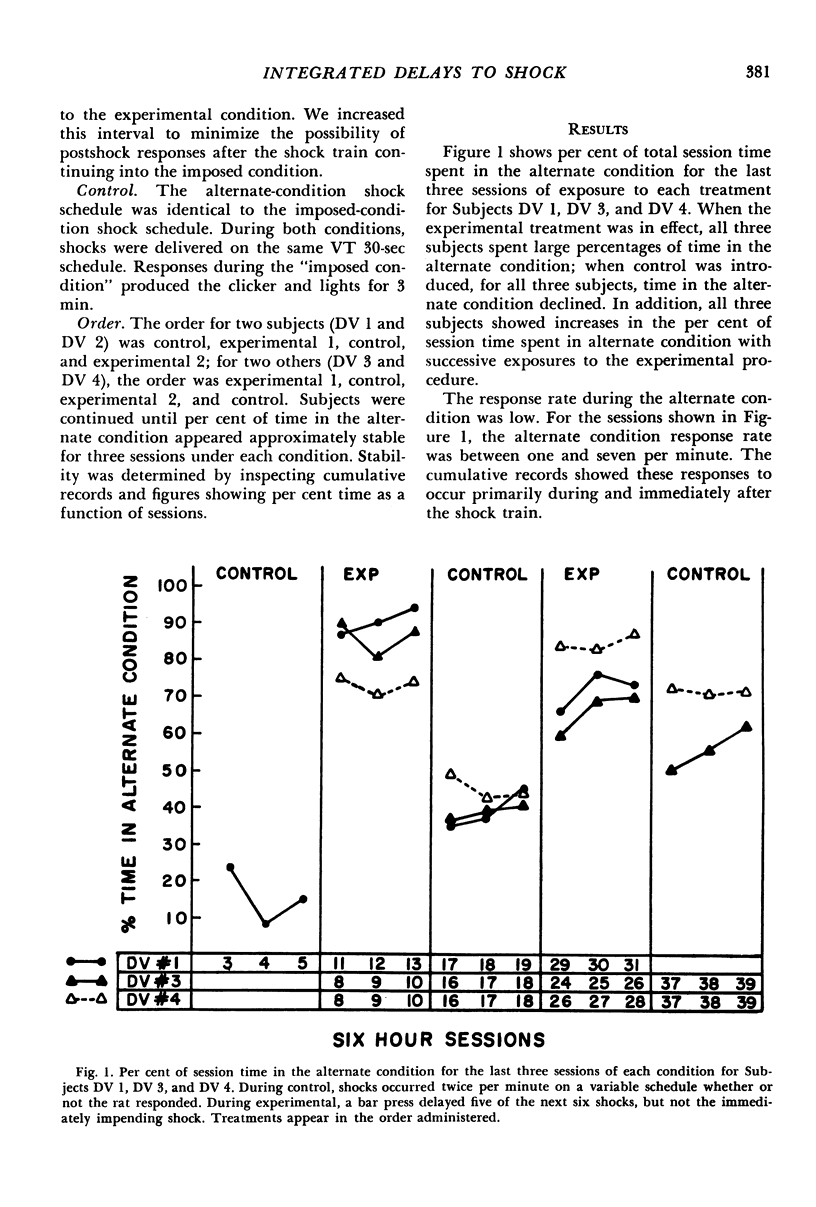
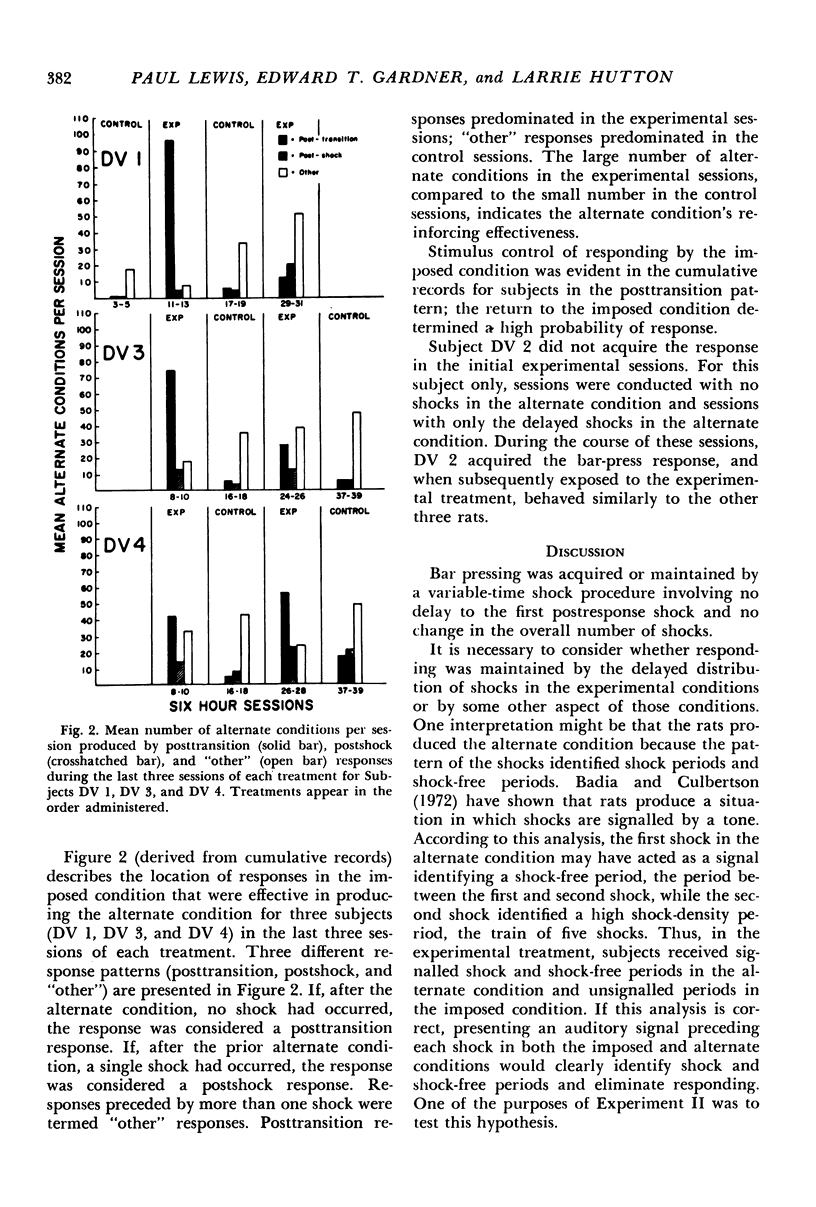
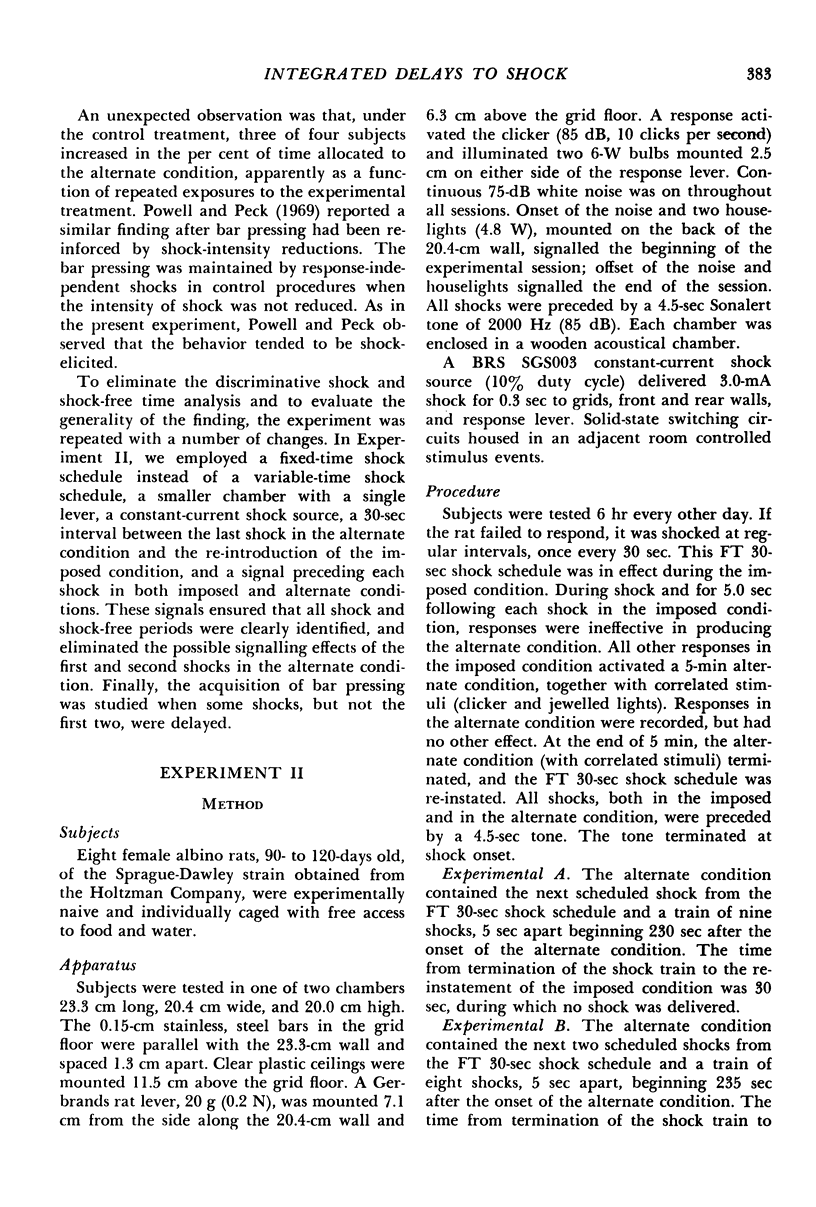
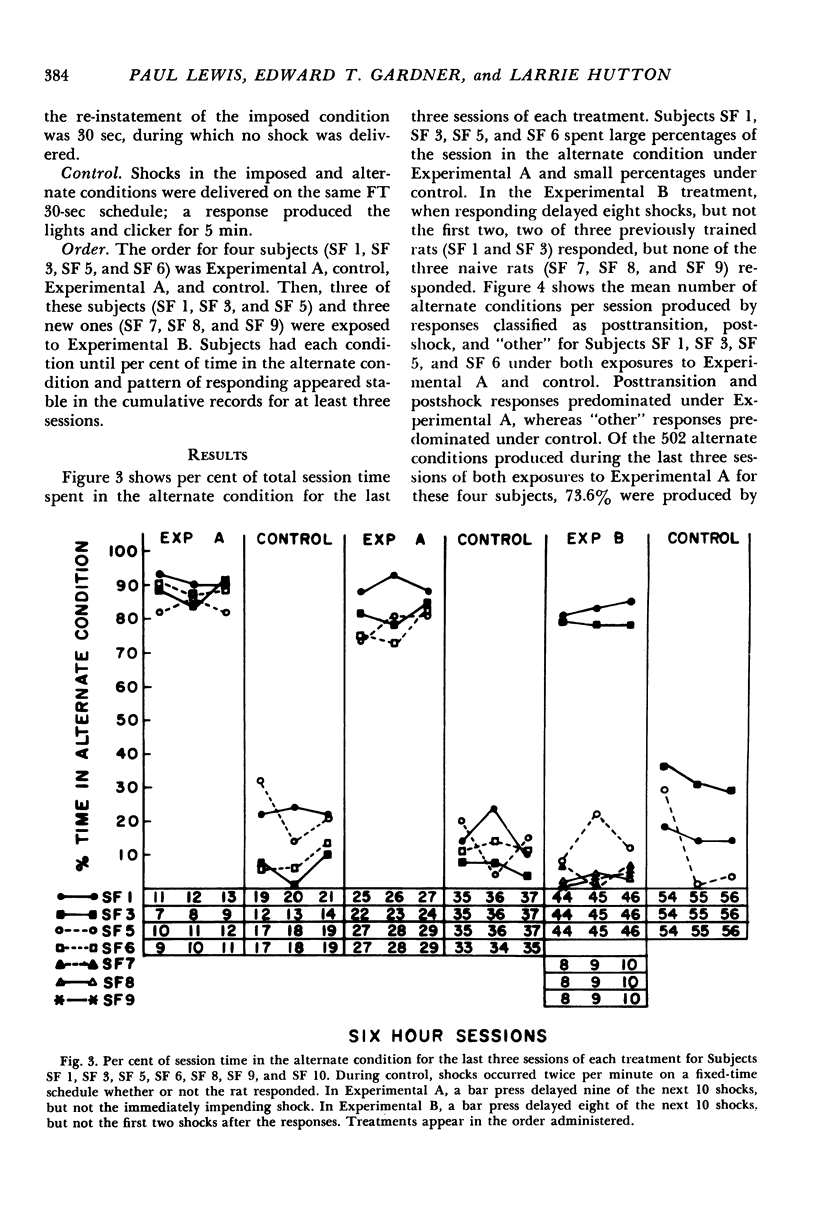
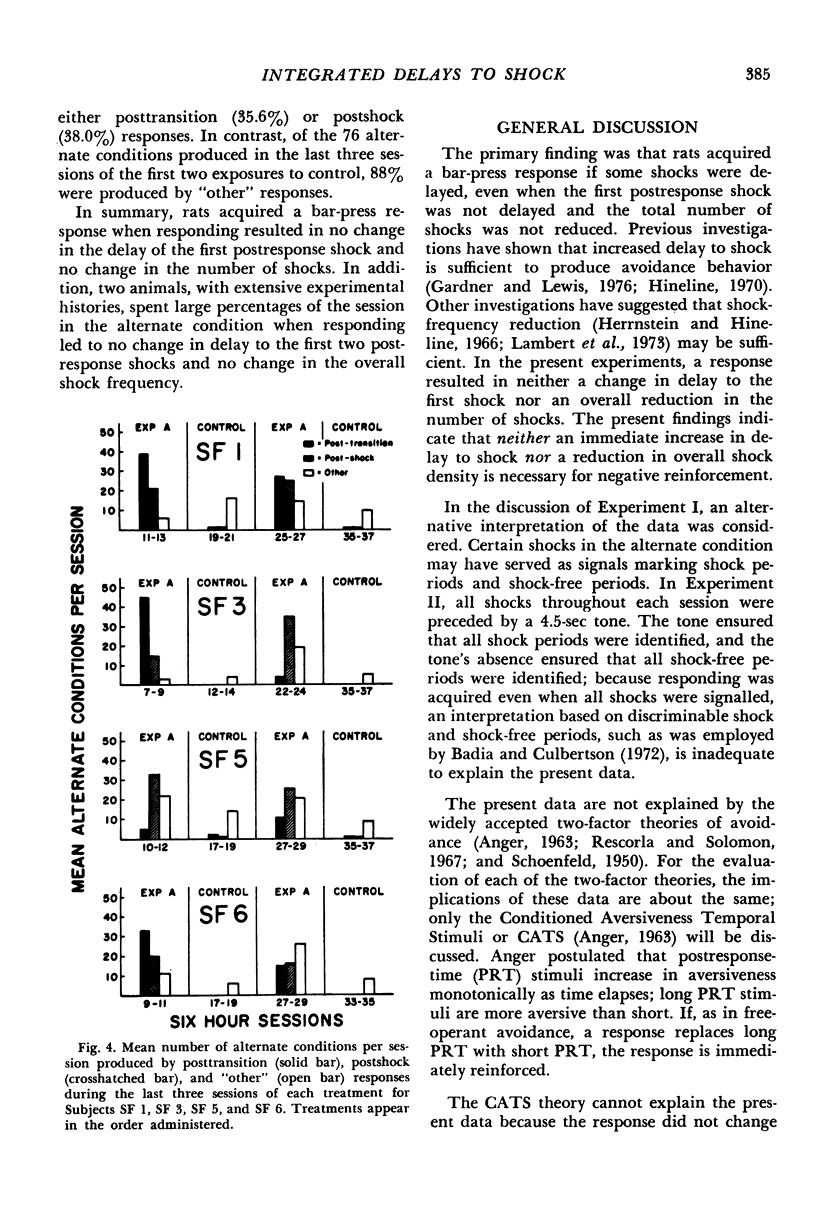

Selected References
These references are in PubMed. This may not be the complete list of references from this article.
- ANGER D. The role of temporal discriminations in the reinforcement of Sidman avoidance behavior. J Exp Anal Behav. 1963 Jul;6(3):477–506. doi: 10.1901/jeab.1963.6-s477. [DOI] [PMC free article] [PubMed] [Google Scholar]
- BOLLES R. C., POPP R. J., Jr PARAMETERS AFFECTING THE ACQUISITION OF SIDMAN AVOIDANCE. J Exp Anal Behav. 1964 Jul;7:315–321. doi: 10.1901/jeab.1964.7-315. [DOI] [PMC free article] [PubMed] [Google Scholar]
- Badia P., Culbertson S. The relative aversiveness of signalled vs unsignalled escapable and inescapable shock. J Exp Anal Behav. 1972 May;17(3):463–471. doi: 10.1901/jeab.1972.17-463. [DOI] [PMC free article] [PubMed] [Google Scholar]
- Baum W. M. The correlation-based law of effect. J Exp Anal Behav. 1973 Jul;20(1):137–153. doi: 10.1901/jeab.1973.20-137. [DOI] [PMC free article] [PubMed] [Google Scholar]
- FLESHLER M., HOFFMAN H. S. A progression for generating variable-interval schedules. J Exp Anal Behav. 1962 Oct;5:529–530. doi: 10.1901/jeab.1962.5-529. [DOI] [PMC free article] [PubMed] [Google Scholar]
- Gardner E. T., Lewis P. Negative reinforcement with shock-frequency increase. J Exp Anal Behav. 1976 Jan;25(1):3–14. doi: 10.1901/jeab.1976.25-3. [DOI] [PMC free article] [PubMed] [Google Scholar]
- Herrnstein R. J., Hineline P. N. Negative reinforcement as shock-frequency reduction. J Exp Anal Behav. 1966 Jul;9(4):421–430. doi: 10.1901/jeab.1966.9-421. [DOI] [PMC free article] [PubMed] [Google Scholar]
- Hineline P. N. Negative reinforcement without shock reduction. J Exp Anal Behav. 1970 Nov;14(3):259–268. doi: 10.1901/jeab.1970.14-259. [DOI] [PMC free article] [PubMed] [Google Scholar]
- Lambert J. V., Bersh P. J., Hineline P. N., Smith G. D. Avoidance conditioning with shock contingent upon the avoidance response. J Exp Anal Behav. 1973 Mar;19(2):361–367. doi: 10.1901/jeab.1973.19-361. [DOI] [PMC free article] [PubMed] [Google Scholar]
- Powell R. W., Peck S. Persistent shock-elicited responding engendered by a negative-reinforcement procedure. J Exp Anal Behav. 1969 Nov;12(6):1049–1062. doi: 10.1901/jeab.1969.12-1049. [DOI] [PMC free article] [PubMed] [Google Scholar]
- Rescorla R. A., Solomon R. L. Two-process learning theory: Relationships between Pavlovian conditioning and instrumental learning. Psychol Rev. 1967 May;74(3):151–182. doi: 10.1037/h0024475. [DOI] [PubMed] [Google Scholar]
- SIDMAN M. Avoidance conditioning with brief shock and no exteroceptive warning signal. Science. 1953 Aug 7;118(3058):157–158. doi: 10.1126/science.118.3058.157. [DOI] [PubMed] [Google Scholar]
- SIDMAN M. Reduction of shock frequency as reinforcement for avoidance behavior. J Exp Anal Behav. 1962 Apr;5:247–257. doi: 10.1901/jeab.1962.5-247. [DOI] [PMC free article] [PubMed] [Google Scholar]


